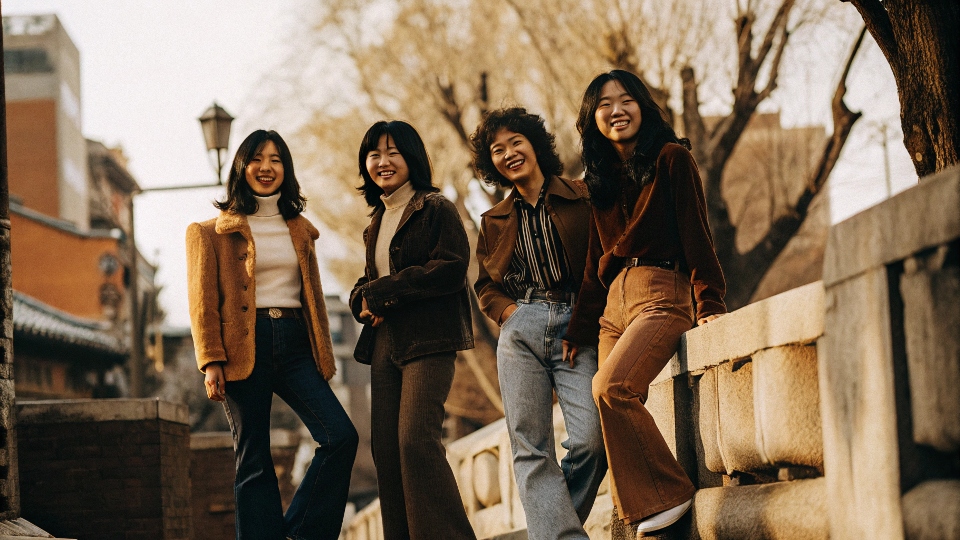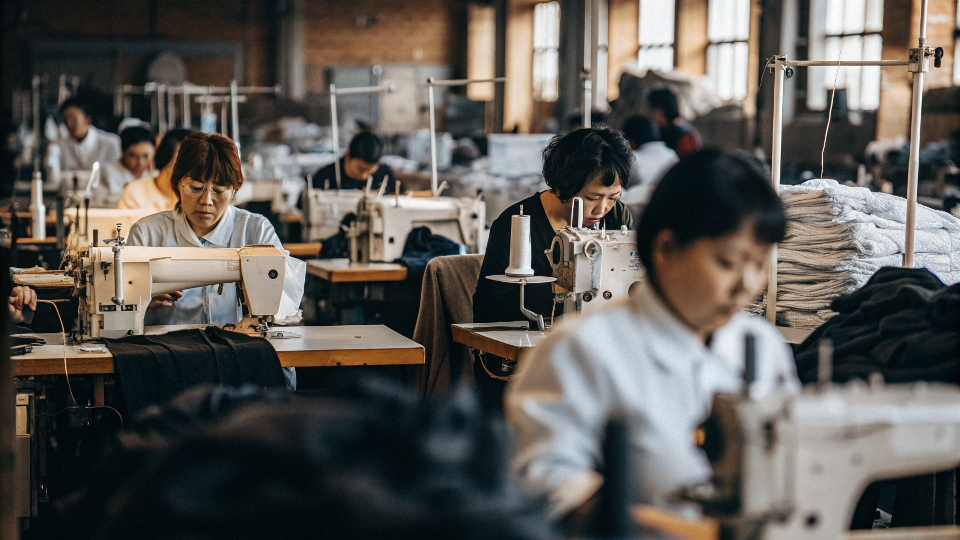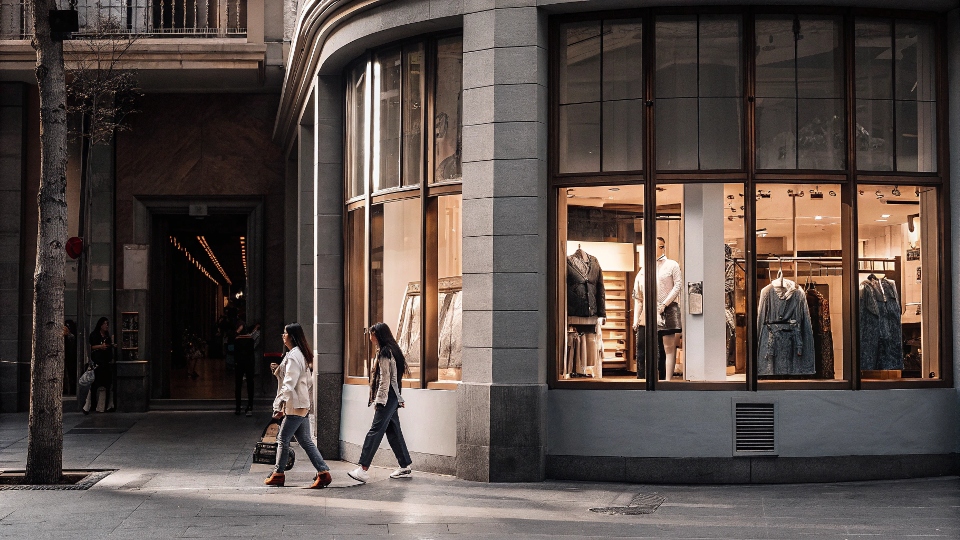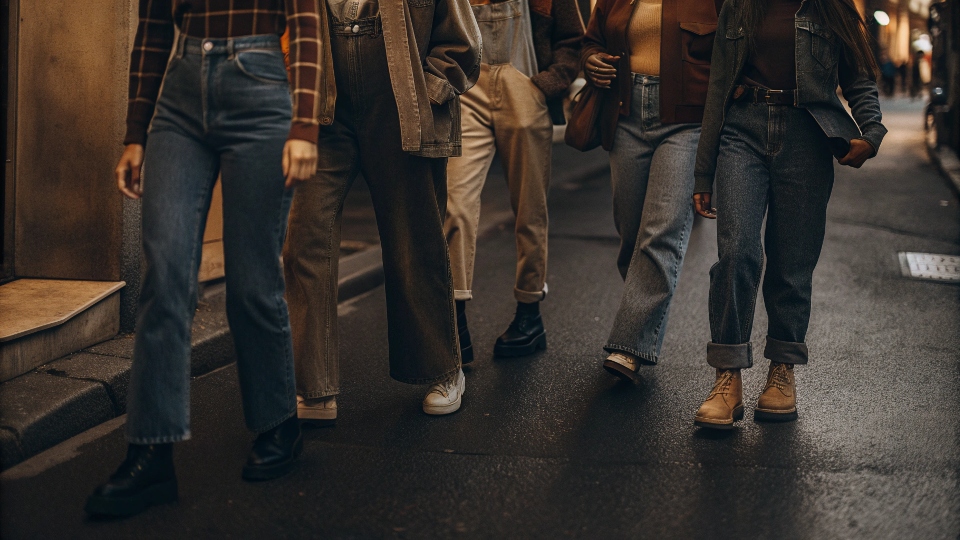You see jeans everywhere in China today, a staple in almost every wardrobe. You wonder how this classic American garment became so deeply woven into modern Chinese culture.
American jeans first appeared in China in the late 1970s but really became popular in the 1980s. By the 1990s, they were a major fashion symbol1 for young people, representing freedom and a connection to Western culture as China opened up.
I've been in the denim business2 here in Dongguan for over two decades. I didn't just see this change happen; my factory was a part of it. The story of jeans in China is also the story of how China became the world's factory.
It began with just a few cultural sparks, like a popular American TV show or a movie poster. Soon, the desire for this symbol of the West grew into a massive market, and factories like mine were built to meet that demand.
When Did American Clothes Start Being Made in China?
Many of your clothes say "Made in China." You probably wonder when this global manufacturing shift actually began and how it took off so quickly.
The manufacturing of American clothes in China started in the late 1970s and grew rapidly in the 1980s. This was powered by China's "Reform and Opening-Up3" policy, which encouraged foreign investment and created special zones for export-focused factories.
My own factory in Dongguan is a direct product of this era. Guangdong province became the epicenter of this manufacturing boom. The government created what were called "Special Economic Zones4" which offered incentives for foreign companies to set up production here. Brands from the US and Europe realized they could make high-quality clothing at a much lower cost.
The Rise of a Manufacturing Superpower
It started slowly, with smaller orders. But the workforce was skilled and eager. We learned quickly how to meet international quality standards. I remember the incredible pace of development.
What was a quiet town one year became a hub of industrial activity the next. This relationship between Western brands and Chinese factories fundamentally changed the global fashion industry5.
| Decade | Key Developments in Chinese Manufacturing |
|---|---|
| Late 1970s | "Reform and Opening-Up" policy begins. First foreign orders are accepted. |
| 1980s | Special Economic Zones (like Shenzhen) are established. Massive factory growth begins. |
| 1990s | Manufacturing technology and skills improve. China becomes a major global supplier. |
| 2000s | China joins the World Trade Organization (WTO), solidifying its role as the "world's factory." |
When Did Levi's Start Making Jeans in China?
Levi's is the most famous American jean brand in the world. You might assume they were one of the first to start producing and selling in China's massive market.
While Levi's likely began some manufacturing in China earlier, their official entry into the Chinese retail market was in 2001. They opened their first store in Shanghai, marking a major milestone for international brands in the country.
There's an important distinction between making products in a country and selling them there. For many years, American brands used Chinese factories like mine for "contract manufacturing."
They would send us the designs, we would produce the jeans to their exact specifications, and then they would be shipped out and sold in America and Europe. The Chinese people making the jeans couldn't actually buy them in local stores.
The official launch of Levi's stores in 2001 was a huge signal. It meant that the Chinese domestic market was now seen as a primary target for sales, not just a place for production.
It showed that Chinese consumers had the desire and the spending power for premium, authentic American brands. The insight provided facts: by 2010, they had over 500 stores here. As a manufacturer, I saw this shift firsthand.
The orders we received weren't just for export anymore; they were for jeans that would be sold in the new, modern shopping malls popping up all over China.
When Did Jeans Become Popular in the USA?
Jeans are a global uniform, but their story started in America. You might wonder when they transformed from simple work pants into the fashion icon they are today.
Jeans began as work pants for American miners in 1873. They became a symbol of cool, youth rebellion in the 1950s, thanks to movie stars like James Dean, and then became a true fashion staple for everyone in the 1970s.
The history of jeans in the USA is something I had to study to understand the product. It’s what gives them their soul. They were born out of practicality.
Levi Strauss and Jacob Davis patented the riveted blue jean for gold miners who needed pants that wouldn't fall apart. For decades, they were just tough pants for tough jobs.
The Journey from Work to Fashion
The real change happened after World War II. Young people were looking for a way to rebel against the buttoned-up culture of their parents.
They saw actors like Marlon Brando and James Dean wearing jeans on screen, and suddenly, jeans were not just for work anymore. They were a statement. They said you were a little bit dangerous, a little bit different. This rebellious image is what first made them famous around the world and eventually led to their popularity in China.
By the 1970s, everyone was wearing them, and designers started making "fashion" jeans, cementing their place as a cultural staple.
What Do Gen Z Wear Instead of Skinny Jeans?
You have noticed that the super-tight skinny jeans that dominated fashion for years are gone. You want to know what the younger generation, Gen Z, is wearing now.
Gen Z has almost completely replaced skinny jeans with looser, more relaxed fits. Popular styles include baggy jeans6, straight-leg cuts, wide-leg pants, and carpenter pants, often inspired by 90s and Y2K fashion trends.
As a manufacturer, I see these trends in the orders that come into my factory. The design specifications we receive from clients like Dean have changed dramatically. Five years ago, 80% of our production was slim and skinny fits with a lot of stretch.
Today, that number has flipped. We are making mostly wide-leg, straight-leg, and baggy jeans, and many of them are 100% cotton, rigid denim.
The New Denim Silhouette
Comfort is the main driver behind this shift. Gen Z values freedom of movement and a more casual, gender-fluid aesthetic. The tight, restrictive feeling of skinny jeans just doesn't fit with their lifestyle.
The styles we are producing now reflect this desire for comfort and a nostalgic nod to the past. The 90s are back in a big way, and the jeans we are making prove it.
| Feature | The Skinny Jean Era (2005-2019) | The Gen Z Era (2020-Present) |
|---|---|---|
| Dominant Fit | Skinny, Slim | Baggy, Straight, Wide-Leg |
| Fabric | High-stretch denim (lots of elastane) | Rigid 100% cotton or low-stretch |
| Waist Rise | Low to mid-rise | High-rise, mid-rise, and now low-rise again |
| Core Value | A sleek, rock-and-roll silhouette | Comfort, vintage aesthetic, self-expression |
Conclusion
From American workwear to a symbol of freedom in 1980s China, jeans have always reflected the times. Today, their story continues with new fits and global manufacturing.
-
Discover how jeans transformed into a major fashion symbol for youth in China. ↩
-
Explore the dynamics of the denim industry in China and its future prospects. ↩
-
Learn about the pivotal policy that reshaped China's manufacturing landscape. ↩
-
Understand how Special Economic Zones fueled China's rapid industrial growth. ↩
-
Explore China's influence on the global fashion landscape and its manufacturing power. ↩
-
Learn about the resurgence of baggy jeans and their appeal to younger generations. ↩










